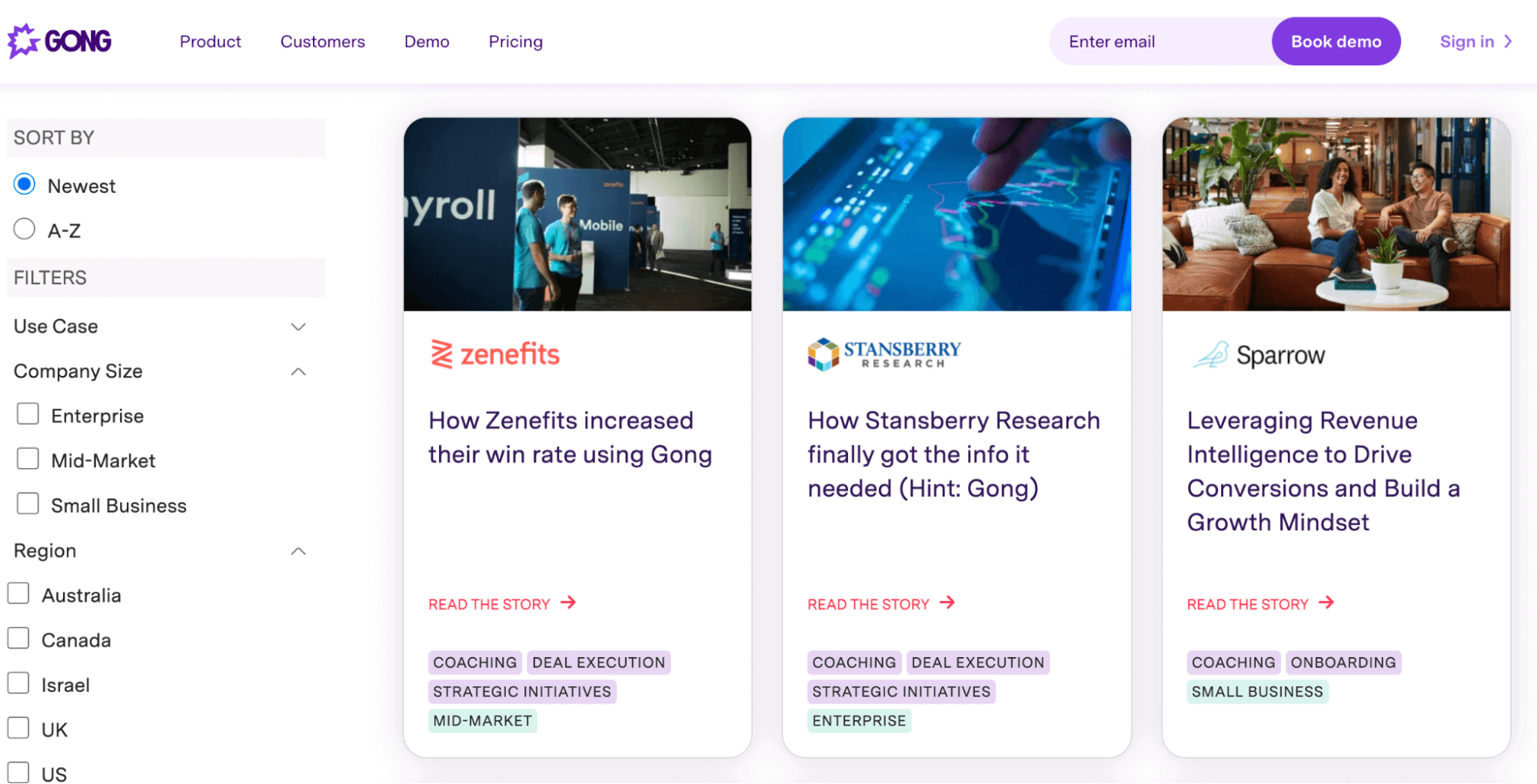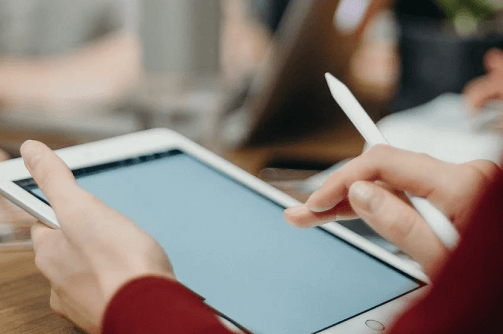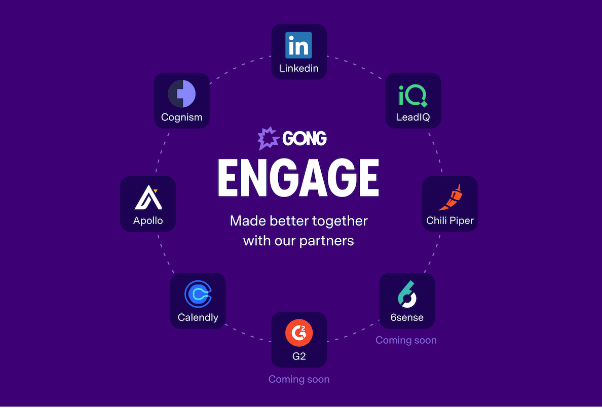These 6 crucial stages define a B2B sales funnel (plus examples!)
It‘s no secret that B2B sales (especially at the enterprise level) take a significant amount of time and effort to nurture and eventually close.
While B2C unicorns like Netflix and Uber can take a product-led approach and drive sales using organic consumer hype, we B2B reps need to be a bit more strategic and methodical about the steps that lead from initial interest through to getting the dotted line signed.
The B2B sales funnel is a popular method for modeling this journey. While it‘s still used widely, there are a handful of critics who believe it‘s a little outdated and perhaps even misguided.
In this article, we‘re going to break down a few of those arguments and explore whether the B2B sales funnel is still a useful model.
Then, we‘ll discuss how you‘d actually go about using it in practice, and share a few helpful examples to illustrate.
What is a B2B sales funnel?
A B2B sales funnel is a stage-by-stage model that depicts how B2B prospects move through the buying process. This might be illustrated using a Top/Middle/Bottom of Funnel model, or with more clearly-defined stages (e.g., Awareness, Interest, Evaluation, Purchase).

In either case, it‘s important to remember that the sales funnel is a model; it‘s a representation of the buyer‘s journey.
B2B sales teams use the funnel model to determine how best to engage with a given prospective customer, and to understand what types of questions to ask and information to provide in order to progress that buyer through the funnel.
Now, there are a few naysayers who proclaim that “SaLeS fUnNeLs ArE dEaD.”
While this isn‘t true, the underlying criticism (that buyers‘ journeys are complex, and B2B buyers don‘t necessarily move through a sequential process as most sales funnels purport) is at least somewhat valid.
Let‘s say, for example, you use a B2B sales funnel model with the following stages:
- Awareness
- Interest
- Consideration
- Intent
- Evaluation
- Purchase
A given buyer might not necessarily move linearly along this pathway. They might run quickly through the first three stages, jump to evaluation, and then decide that the product they thought they needed isn‘t a good fit, and it‘s back to the consideration stage for them.
In another case, the middle four stages might not happen at all. It‘s less common in B2B sales environments (because the costs are inherently higher), but a buyer might jump straight to purchase in order to evaluate the fit and feel of a product.
The best sales funnel examples are those that work as a high-level model.
So, how do we measure and track how buyers are progressing through a sales funnel? We use pipelines.
B2B sales funnels vs. sales pipelines
Let‘s make something clear:
Sales funnels ≠ sales pipelines.
These two terms are sometimes thrown around as synonyms, and though they both represent progressive stages that prospects pass through before becoming buyers, they aren‘t the same thing.

Funnel stages broadly represent the steps in the buyer‘s journey. They represent stages that most buyers go through, but they aren‘t real steps a buyer needs to take.
Pipelines, on the other hand, are an internal sales process.
They represent the stages salespeople go through from lead to sale. Pipelines aren‘t a rough representation of the ideal customer journey, they are actual representations of the sales process, and there‘s no skipping stages (that‘s a sales manager no-no).
Now, with all of this said, sales funnels and pipelines actually have quite a bit in common, and funnel stages typically correspond with specific pipeline stages.
Example, please!
Okay, consider the ‘Interest’ stage of the sales funnel (btw, we‘re going to look at each sales funnel stage in more detail shortly). Here, buyers have moved beyond awareness of a pain point, and they‘re looking into potential options for solving it.
From the sales rep‘s perspective, this stage maps onto the Qualification stage in the sales pipeline. We need to ask purposeful open-ended questions to understand customer needs and challenges, and amplify that pain to motivate buyers to move forward to the next stage.
Okay, let‘s break down the B2B sales funnel and examine the stages within.
B2B sales funnel stages
Before we dive in, a quick primer: Not every organization uses the exact same stages to model its sales funnel.
The following six stages are common, but you may wish to use a more simple model (Top, Middle, and Bottom of Funnel), or condense them into four stages: Awareness, Interest, Desire, Action, or AIDA.
Awareness
Awareness is the very first step in the B2B sales funnel. It‘s where a buyer initially becomes aware of your brand, typically through some kind of inbound marketing channel like a blog post (you know, like this one).
For sales and marketing teams and initiatives, the awareness stage is about promoting the brand (not so much the product), sharing advice and solutions to common customer pain points, and beginning to collect leads.
All of these results, for instance, are examples of awareness-stage content marketing efforts designed to educate potential customers and subtly promote and position the brand as an industry authority.

Awareness-stage efforts are largely owned by marketing, though social media engagement from sales reps is becoming an increasingly important tool for B2B lead generation.

Interest
You‘ve attracted a potential buyer‘s attention, and, ideally, you‘ve helped them solve a problem. They aren‘t ready to jump straight to a purchase yet, but they are interested in your brand, your products, and how you can impact their business or experience at work.
We call this the interest stage, and it‘s all about building the buyer-brand relationship and working with a potential customer to help them understand just how much of an impact the challenge they‘re facing is having.
Note, it‘s still not about selling your actual product, though you will be talking a lot about the kinds of problems your product solves.
Your marketing team should back up blog posts with content like email list campaigns, ebooks, webinars, guides, and even remarketing campaigns to appeal to potential prospects. LinkedIn, for example, jumped straight on a sponsored ad after seeing I was browsing profiles for the example in the above section.

Consideration
At the consideration stage, buyers are considered MQLs (marketing qualified leads), and are seen as prospective customers.
Buyers are now starting to consider solutions, meaning they‘ve digested the problem they‘re facing and have come to the conclusion that a product or service can help them solve it.
Sales and marketing efforts here start to become more product-focused. Email marketing campaigns, free trials, and case studies are important instruments here.

SDRs can start to engage with prospects in an informational capacity (that is, holding discovery calls to identify challenges and fit, but not pushing for a meeting or trial).
Intent
The intent stage is an important hurdle in the sales funnel. It‘s where buyers move from tangential interest in your product or brand to demonstrating buying and intent signals (for example, booking a sales demonstration).
Buyers in this stage are keen to buy (they‘re sales qualified), but they aren‘t convinced yet of which brand or product to go with.
Collateral like whitepapers and product-focused webinars (like Demio‘s webinar on webinars pictured below) are used to support sales activities qualification and demonstration conversations.

Evaluation
The evaluation stage of the B2B sales funnel is where the final purchasing decision happens.
Buyers have seen demos, checked out reviews and case studies, and have access to pricing proposals. Now, it‘s all about weighing up their options and choosing a brand to move forward with.
Sales conversations should leverage urgency (“remember, Mr. Customer, this is a business-critical issue”), and this is the point where negotiations, discounts, and dialogues around service-level agreements take place.
Purchase
Hey! We made it!
The last stage in the sales funnel is arguably the most exciting. It‘s where your buyer signs on the dotted line, the deal closes, and you‘re one step closer to meeting your sales quota.
Of course, the customer experience isn‘t over yet. Relationship-building and retention are crucial in the B2B world.
That‘s outside of the scope of today‘s lesson, but if you‘d like to learn more about customer retention strategies, check out our article on the topic:
MJ McCarthy: How to keep customers for life.
Powerful sales questions to ask at each funnel stage
There‘s nothing worse than a sales call that feels more like an interrogation than a conversation, with a series of yes/no questions that leave both parties questioning their life choices.
Not only are these types of calls incredibly painful, but they‘re actually detrimental to sales results. Questions that elicit longer answers have been shown to influence call conversion rates.

With this in mind, we‘re going to look at some questions to ask at each stage of the sales funnel to build trust and really maximize your ability to close (we‘re going to use a more simplified B2B sales funnel model this time around).
Top of Funnel
Top of Funnel (ToFU) leads for salespeople are generally outbound leads (i.e., you‘re cold calling) — inbound leads tend to be further along the journey by the time they come to you.
These buyers are in a stage we call “latent pain,” meaning they haven‘t yet come to terms with the challenge you solve (even though they might have it), and haven‘t decided that it‘s a business priority.
The salesperson‘s job here is to explore and amplify that pain point, to help them to understand how it is actually impacting their lives, and get them to a point where they want to do something about it (which is the catalyst for becoming a Middle of Funnel lead).
Here, we don‘t ask discovery questions about solutions or outcomes; we‘re diving into what‘s happening right now:
- Tell me about what your biggest business challenges are as it pertains to ___ (context of your offering).
- How is this presenting itself as a problem to the business?
- What‘s the impact of this on your day-to-day?
- How are you currently addressing [pain/problem]?
- What would it mean if we were able to address this problem?
- What happens if we don‘t address it?
Middle of Funnel
Middle of Funnel (MoFU) leads are going to be either:
- Outbound leads you‘ve been working with (and convinced that their pain point needs solving).
- Inbound leads who already have an active challenge to solve, and they‘ve come to you to solve it.
MoFU leads don‘t want to mess around with a “tell me all about the challenges you‘re facing and why that sucks so bad” conversation. They want to talk about alternative solutions and potential outcomes.
So, ask questions like:
- Help me understand what you‘re hoping to accomplish by rolling out ___ (tool/ category)?
- If I could wave a magic wand and improve one KPI, which one would you want it to be?
- What are your buying decision criteria?
- What‘s most important to you as you evaluate vendors?
- What‘s missing from our solution as it stands today?
Bottom of Funnel
Bottom of Funnel (BoFU) leads are poised to buy. They‘re likely considering other vendors, but they‘ve definitely established that your solution is a potential fit.
Sales closing questions need to guide the conversation towards signing a deal. Try these:
- What exactly happens between getting the green light and signing the agreement?
- What other information do you need from us in order to move forward?
- What obstacles could prevent you from moving forward?
- Do you see a world in which you move forward before [date]?
Fine tune your B2B sales funnel with Gong
The B2B sales funnel is a helpful model for understanding how buyers move through the customer journey, but it‘s important to remember that we need a practical way of measuring this too.
For this, you need to use a sales pipeline, customized to fit the specific processes and sales motions your organization has developed.
No need to spend hours building one, though. We‘ve got a sales pipeline template built and ready to go — check it out here.

